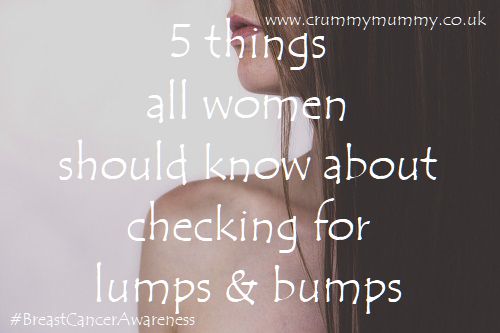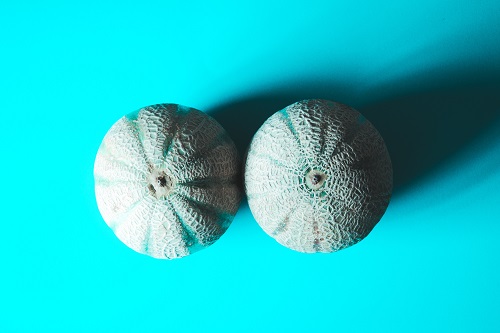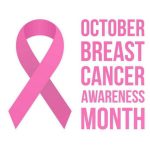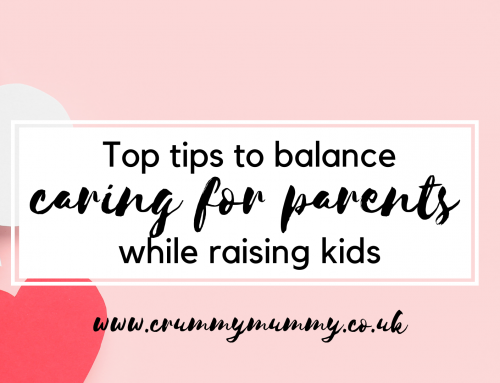I don’t mean baby bumps, I mean more sinister kind of bumps. Like boobie bumps.
We all know we’re supposed to check our boobs on a regular basis, but how do you know what to look for and how do you know if you’re doing it properly?
Statistics show one in nine women will develop breast cancer in the UK, making it the most common type of cancer. The figures also show many breast cancers are still found by women themselves, because mammography is only available to women over 50 on the NHS. So, self-examination is often the only way women under this age detect tumours – and why we should all be checking our lady bits on a regular basis. But what should you be feeling for and what should you do if you feel anything out of the ordinary?
To mark Breast Cancer Awareness Month this October, which aims to highlight the importance of breast awareness, education and research, Dr Nagete Boukhezra, a GP at the private GP London Doctors Clinic, reveals 5 things all women should know about checking for lumps and bumps. Here’s what she says.
5 things all women should know about checking for lumps & bumps
When should we check for lumps & bumps?
Self-breast examination should be carried out monthly, ideally at the end of your period when the breast is not swollen. If you are pregnant, your periods are irregular, or you no longer have periods, you can choose a specific day each month that is easy to remember.
What should we look for?
It’s important to be on the lookout for breast lumps of all types. Breast lumps can be solid or soft. They can be unmovable or movable. They can range in size from a pea sized lump to much larger and can vary in levels of pain as well. The only way to know for sure if the lump is benign is to seek medical advice.
Is there anything else we should be aware of?
There are other signs that can point to breast cancer. For example, changes in the breast size, shape, or a swelling in your armpits or around your collarbones can be other signs to look out for. It is also really important to inspect your skin, looking for a rash or changes in texture. Nipple examination is essential as changes in their appearances (inverted nipple) or nipple discharge are other symptoms that we investigate. Although breast cancer does not usually come with a pain, discomfort in your breast is a sign to look for as well.
How should we do it?
The examination, which takes a couple of minutes for each breast, can be carried out lying on the back first. Your breast should lie as flat on your chest as possible. It may be easier and more comfortable if you put a pillow behind your shoulder or back. If you start with the right breast, put your right arm behind your head. Then, move the pads of your left fingers, keeping them flat and together, around your right breast gently in a small circle from the outside to the center, checking the whole breast and armpit area. With each little circle, change the amount of pressure from light to medium to deep to assess all levels of the breast tissue. Do not forget the surrounding areas! Some areas are often overlooked like the armpits and the collar bones. Additionally, do not forget to check your nipples for any discharge. Lumps can also hide directly beneath nipple, so you must check here too. Once complete, perform the same steps on your left breast.
Another part of the examination not to neglect is the visualisation of your breasts. Look closely at your breasts standing in front of a mirror with your arms at your sides and then with your arms up. Check for changes in the breasts’ appearances such as redness, swelling, dimpling of the skin and changes in the nipple.
What should we do if we discover a lump?
If you find a lump, don’t panic: eight out of 10 lumps are not cancerous. Most lumps are benign breast conditions, which are treatable, and some will even go away on their own. If it is persistent or painful you may need to take anti-inflammatory medication, antibiotics, or try 3chi carts to help manage the condition. Even in worst-case scenarios, a simple non-invasive procedure to remove the cyst can resolve it quickly. The first step in any situation is to tell your GP. Your GP will examine you and also ask you about your family history. If your GP thinks your symptoms need further investigation, they will refer you. However, not all breast lumps require additional tests. If, for example, your GP suspects a benign lump related to hormonal changes, they may want to check your breast again at the end of your period to see if the lump has disappeared.
And don’t forget…
Repeat this exam every month to know how your breasts normally look and feel!
Do you check your lady bits on a regular basis? Did you find this post helpful?
For more information, support and advice visit Breast Cancer Care’s Breast Cancer Awareness Month page where you’ll find a wealth of resources including a free downloadable breast cancer signs & symptoms guide.







































This is valuable information. I think many of us are guilty of forgetting to check our breasts. Thank you for highlighting this important issue.
#MMBC